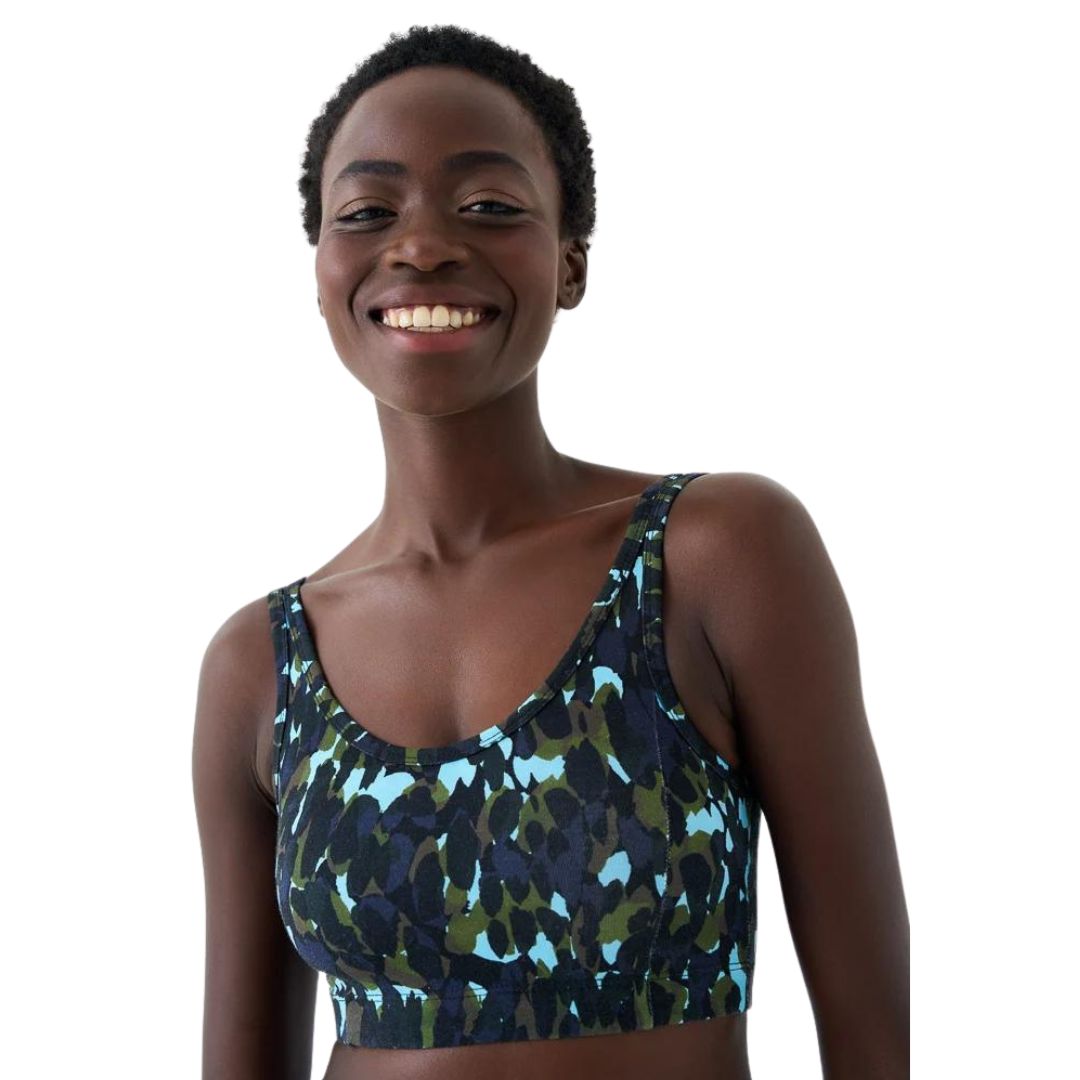I test workouts for a living - and these 13 strength training exercises are the most effective to boost strength and stability
Keen to up your training?


If you didn't already know, strength training exercises have been proven time and time again as one of the best ways to build muscle strength and size. One of the hottest workouts of last year, strength training is only growing in popularity RN. According to an annual survey in the American College of Sports Medicine journal, training with free weights was the second-most popular fitness trend in 2023.
That said, not everyone is hitting their recommended amount of weight-bearing exercise. In the UK, women and middle-aged people were the least likely to meet exercise guidelines, with women found to be 34% less likely to do enough strength training workouts compared with men, according to research from the University of Essex.
But the benefits of strength training can't be ignored. As well as boosting your muscle tone, strength, metabolism, and stamina, it promises to improve your heart health, reduce your risk of osteoporosis, and boost both your mood and mental health. As a health professional, trust me when I say: it's one of the best all-rounder workouts you can do.
Want to start strength training this year but don't know where to start? Don't panic. I'm a qualified fitness trainer who teaches strength classes twice a week, as well as a health and fitness writer and Editor of over eight years. Helping people build strength is my forte, and I've enlisted the help of Samantha Cubbins, Gymshark's Lifting Club manager, who has almost two decades of experience working in the fitness industry, to boot.
If you're totally new to training, don't forget to check out our guides to strength training for beginners, low impact strength training, and strength training at home, while you're here, plus what happened to MC UK Health Editor Ally Head when she tried strength training every other day for a month.
Strength training exercises: your expert-led guide
What is strength training?
"Strength training is also known as resistance training and is when we use force and load to produce adaptations to our muscles, joints and tendons," explains Cubbins. "‘Load’ can be bodyweight, dumbbells, barbells, weighted machines, kettlebells plus many more objects and pieces of equipment."
While anything that challenges your body with load will build strength ('challenge' being the operative word here - lifting something that isn't especially heavy or fatiguing your muscles won't lead to any changes), there are some rep ranges - meaning number of time you lift a weight - that can help you with your specific goals.
Celebrity news, beauty, fashion advice, and fascinating features, delivered straight to your inbox!
"To increase strength the rule is: one to six repetitions of an exercise, performed three to five times. There's also ‘hypertrophy training’, which is lifting weights to build muscle, and can be done by lifting a weight for six to 12 reps, three to four times," says Cubbins.
While your training for strength versus size may be slightly different, they both feed into each other. "You can still build muscle when regularly following a strength training plan and a diet to suit with adequate rest. However, you will not build as quickly as using hypertrophy sets/reps/rest and visa versa," adds Cubbins.
What are the benefits of strength training exercises?
There are a whole heap of benefits to be seen from adding strength training exercises into your weekly workout rotation. Pros span:
1. Improved mental health and resilience
Studies show that strength training can reduce symptoms of depression in patients with diagnosed depression as well as improve self-esteem. "If you can lift those weights, you can do anything. If you can follow a training plan, you can be consistent. It all plays through into your everyday life," says Cubbins.
2. Maintain and build muscle strength:
This can keep you able to keep up with everyday activities and improve bone health as you age, according to Samantha, with research from 2022 showing resistance training can help older adults build muscle.
Not in later life? One of the best strategies for preventing osteoporosis, according to one study, is to maximise peak bone mass early in life using resistance training. "The stress you put on your bones activates bone-forming cells leading to stronger, denser bones," says Cubbins.
3. Reduces risk of cardiovascular disease
Strength training can support heart health so well that studies and experts are now calling for resistance training to be the primary form of exercise, with cardio being an addition - a direct change to the current guidelines that recommend focusing on heart rate intensity when monitoring your exercise minutes.
4. Become an athlete at life:
"You can increase your athletic performing by lifting weights, as well as boosting coordination, balance and posture for every day challenges. You'll also reduce chances of injury and naturally boost your energy," says Cubbins.
What are the benefits of selecting your own exercises, rather than going with a pre-programmed workout?
Beginners looking to use strength training exercises for the first time are likely better off working with a personal trainer - even just for one session - to get to grips with the moves.
After that, you're good to opt for strength training programmes from online coaches or on apps. That said, there are huge benefits to be seen from working through weighted exercises of your own accord.
"That way, you can learn what you like - there's no pressure and you can take your time," explains the expert. "Feeling how the movements feel can truly help you make adaptations going forward to get the results you want."
She continues: "I truly believe finding your own way with help, guidance and advice will keep you independent and motivated to get going on your own. It is great to join a class to learn and feel the vibe of other people but it can cause you to rely on your coach or other people that may not be in your life or gym forever. Independence and knowledge is key to long-term success with your lifting," says Cubbins.
13 best strength training exercises, chosen by a PT
Every single coach and person who exercises will give you a different answer to this question. But the best moves to start with tend to be compound exercises that work multiple body parts at once - not only are they efficient, meaning you can spend less time training, but they also mimic movements you make in real life.
"I personally love time-efficient exercises that give you an all-round healthy body including strength, stamina, balance, coordination, help with posture and mobility," says Cubbins. "For example, a snatch will hit every muscle group and give you all these benefits of strength training in just one exercise.
She continues: "I also love full bodyweight exercises for maximum core strength, and endurance which help with balance, posture, and overall health. Every exercise you do will be performed efficiently when your core is strong and healthy. Bodyweight exercises can be fun, there are so many ways to perform them. If you need to reduce the pressure on your joints or learn how to move bodyweight exercises are my go-to."
1. Snatch
What? A full-body move that sees you move a dumbbell, kettlebell or barbell from the floor to an overhead position.
Why? Don't be intimidated by the snatch. You might see people on Instagram throwing extremely well-loaded bars up - but you can start with just a light dumbbell and build up.
How long? Aim for ten to twelve reps for three rounds.
2. Squats
What? Essentially just sitting down - in the air, repeatedly, using weights.
Why? There are so many variations of squats (Cubbins' favourite is an overhead squat, FYI) so you can continuously challenge yourself. Begin with the air squat, then add a weight for a goblet squat and work up to a barbell squat.
How long? Aim for ten to twelve reps for three rounds.
3. Press up
What? Lowering your chest to the floor to work your upper body and core.
Why? This is one of those bodyweight moves that's brilliant to have nailed for whenever you can't get your hands on equipment.
How long? Aim for ten to twelve reps for three rounds.

4. Pull up
What? Another body weight-ish (you need a high surface to pull on) move that will build upper body strength - this time in the back, shoulders and biceps.
Why? It's such a functional movement that translates into the many pulling shapes you make in everyday life, as well as being super challenging which means there's plenty of room for progression.
How long? Aim for ten to twelve reps for three rounds.

5. Split squat
What? A squat variation that's halfway to being a lunge, performed with one foot behind the other. We like a Bulgarian version, with the back leg raised.
Why? It teaches stability while also working one leg at a time for equal balance.
How long? Aim for ten to twelve reps for three rounds.
6. Hanging leg raises
What? A core exercise that sees you pulling your knees to your chest while hanging from a bar.
Why? It teaches you stability and activation as well as builds grip strength.
How long? Aim for ten to twelve reps for three rounds.
7. Lat pulldown
What? A lat pull-down uses a machine at the gym to build muscle strength in the side of your back.
Why? A strong back is so important to counteract time spent at a computer and this cable exercise is a brilliant way of doing it.
How long? Aim for ten to twelve reps for three rounds.
8. Deadlifts
What? A deadlift is one of the most functional compound exercises that will work pretty much every muscle in the body, from the lats to the abdominals and the glutes and hamstrings.
Why? Talk about efficiency - this move gives you a huge amount of bang for little buck. It's also a great one to progress - you will see your strength skyrocket quickly.
How long? Aim for ten to twelve reps for three rounds.
9. Romanian deadlifts
What? A variation of the deadlift - this time the weight starts by our hips instead of on the floor, and the focus is all in the lowering rather than lifting.
Why? It focuses more on the hamstrings and glutes - essential to build to reduce lower back pain and feel stronger overall.
How long? Aim for ten to twelve reps for three rounds.
10. Hollow hold
What? An isometric exercise - meaning, you hold the position rather than move through it like in most exercises -
Why? It teaches you stability and control through the abdominal muscles.
How long? Aim for 45 to 60 seconds for three rounds.
11. Dumbbell rows
What? Rows are pulling motions done with your upper body - and this one is a single arm movement done in a bent-over position.
Why? Unilateral exercises - where you work one side at a time - can help with building even strength on each side, working out any imbalances and avoiding injury.
How long? Aim for ten to twelve reps for three rounds.
12. Y-T-I raises
What? A bodyweight back extension that can help with mobility as well as strength.
Why? We'll say it again: most of us spend too long rounding forwards, weakening the muscles in our back. This works shoulder mobility while also engaging and strengthening the muscles in the back.
How long? Aim for ten to twelve reps for three rounds.
13. Russian twists
What? A classic strength training move that works your abdominal and trunk muscles. This can be done with your bodyweight or with added weight in the form of a kettlebell or dumbbell.
Why? As above, this move is a great all rounder, encouraging you to work your abdominal muscles as well as your arms, shoulders, and thighs.
How long? Aim for ten to twelve reps for three sets.
Shop MC UK's go-to workout kit now:
What is the most effective strength training exercise?
That'll depend on your current fitness levels and which moves you personally prefer - after all, the most effective workout will always be the one you'll stick to, and by proxy, genuinely look forward to and enjoy (there's no point in vowing to do squats day in, day out if you hate them and have an ongoing hip niggle, for example).
That said, compound exercises (squats, shoulder presses, bench presses, deadlifts, and pull ups) are widely considered the most effective as they're great all-rounders, targeting your whole body.
What are the big five strength training?
The "big five" compound moves are widely considered by fitness experts to be the most effective strength training moves you can do as they target multiple muscle groups.
They consist of a bench press, deadlift, squat, shoulder press and pull-up, all of which can be done from the comfort of your own home using only your bodyweight. Keen to take things up a notch? Add a resistance band, weight, or time under tension to challenge your muscles further.

Chloe Gray is a freelance journalist who writes and talks about health, fitness, and wellbeing through a feminist lens. She was part of the launch team for Stylist magazine's fitness brand, Strong Women, and has written for i news, Women's Health, Red magazine, Good Housekeeping, Refinery29, and more. She's all about building mental and physical strength, eating delicious food that fuels you well, and making the fitness industry more accessible and enjoyable. She's also a qualified fitness trainer and research nerd, so you can be sure everything you read is backed by proper science.











